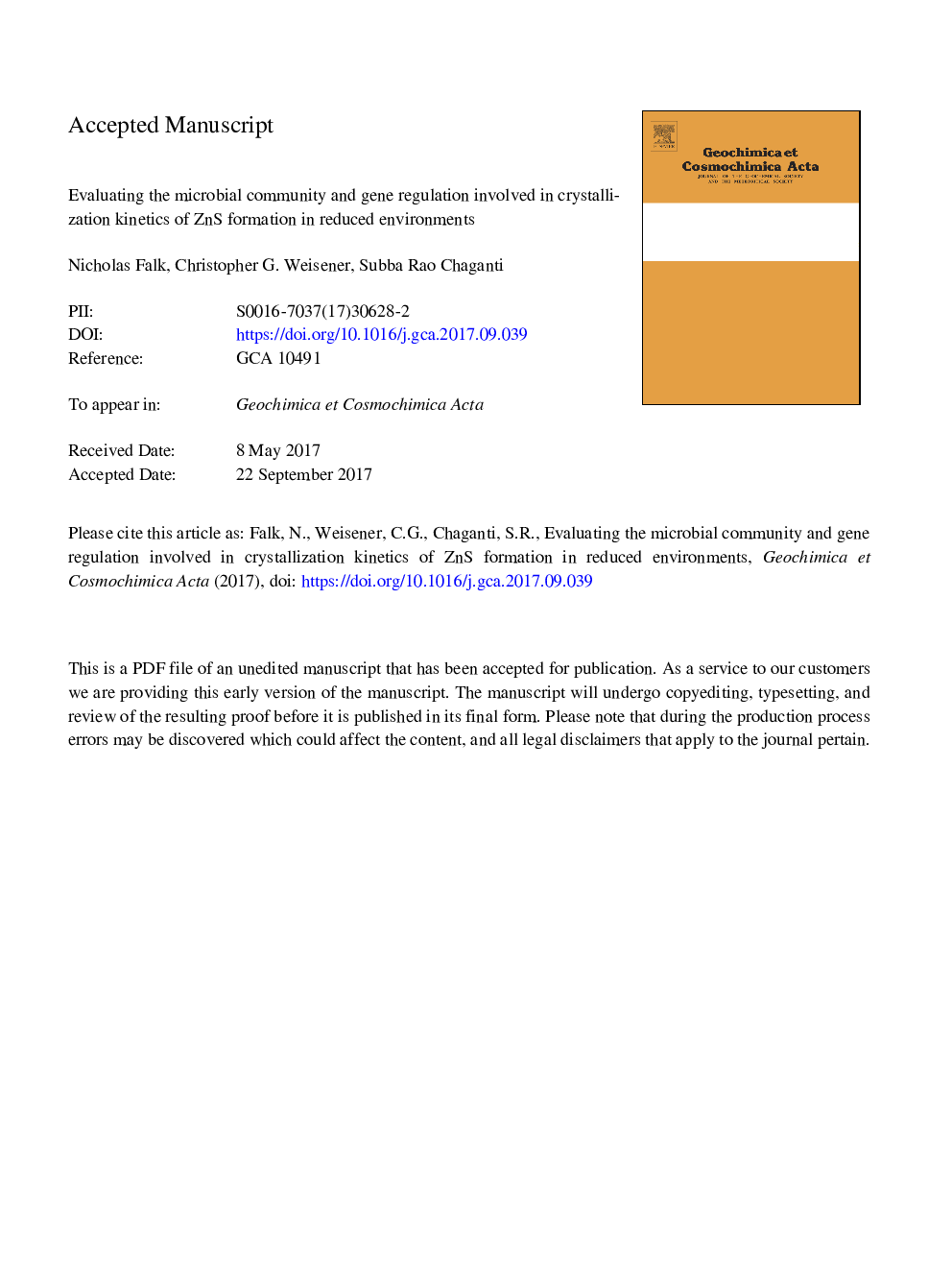| کد مقاله | کد نشریه | سال انتشار | مقاله انگلیسی | نسخه تمام متن |
|---|---|---|---|---|
| 8911015 | 1637937 | 2018 | 39 صفحه PDF | دانلود رایگان |
عنوان انگلیسی مقاله ISI
Evaluating the microbial community and gene regulation involved in crystallization kinetics of ZnS formation in reduced environments
دانلود مقاله + سفارش ترجمه
دانلود مقاله ISI انگلیسی
رایگان برای ایرانیان
کلمات کلیدی
موضوعات مرتبط
مهندسی و علوم پایه
علوم زمین و سیارات
ژئوشیمی و پترولوژی
پیش نمایش صفحه اول مقاله

چکیده انگلیسی
In anoxic environments, sulfate-reducing bacteria (SRB) may precipitate sparingly-soluble, fine-grained sulfides as by-products of dissimilatory sulfate reduction. This bio-mechanism lends importance to acid rock drainage (ARD) remediation efforts for its ability to immobilize harmful metals from contaminant pathways, including Zn. However, SRB often coexist alongside multiple bacterial guilds in these environments, and may be sustained or hindered by the activities and metabolic by-products of their cohorts, driven by the commonly available substrates. Thus, the effectiveness of onset sulfate reduction and resultant metal-sulfide generation in ARD treatment can be enhanced by unravelling the complexities associated with these interactions. This research used material sourced from a passive bioreactor system located at the Stockton Coal Mine, New Zealand to investigate SRB activity and associated community function. RNA sequencing showed spore-forming Desulfitobacterium and Desulfotomaculum as the dominant SRB enriched from the reduced zone of the bioreactor. Metatranscriptomic analysis revealed acetogenic bacteria as syntrophic partners in substrate availability and Pseudomonas as metal-resistant community members. ZnS precipitates were observed by scanning electron microscopy (SEM) in short-term batch enrichments as well as long-term raw bioreactor material, with observed differences in mineral arrangement indicative of different nucleation scenarios. Syntrophy, metal response mechanisms, and the capacity for sporulation were observed as key microbial functions in mine waste reclamation settings. Here, Zn and S mass balance calculations coupled with RNA sequence data and microscopy illuminated favourable physicochemical and biological conditions for early metal sulfide precipitation in passive treatment systems for ARD and highlight the advantages of linking both lab and field-scale studies.
ناشر
Database: Elsevier - ScienceDirect (ساینس دایرکت)
Journal: Geochimica et Cosmochimica Acta - Volume 220, 1 January 2018, Pages 201-216
Journal: Geochimica et Cosmochimica Acta - Volume 220, 1 January 2018, Pages 201-216
نویسندگان
Nicholas Falk, Subba Rao Chaganti, Christopher G. Weisener,